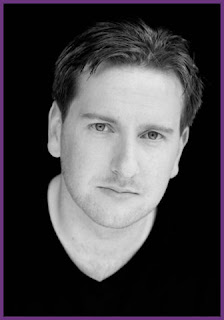Not that I have been _entirely_ frivolous over the last couple of weeks. I’ve also just finished a novella titled “Lord John and the Plague of Zombies,” and here’s a bit of it, for your entertainment–hope you enjoy it!
“Lord John and the Plague of Zombies” – excerpt
Copyright 2010 Diana Gabaldon
[This will be published in an anthology titled DOWN THESE STRANGE STREETS, edited by George R.R. Martin and Gardner Dozois. No, I don’t have a pub date for this yet, but am assuming sometime in 2011.]
“Your servant, sah,” he said to Grey, bowing respectfully. “The Governor’s compliments, and dinner will be served in ten minutes. May I see you to the dining room?”
“You may,” Grey said, reaching hastily for his coat. He didn’t doubt that he could find the dining-room unassisted, but the chance to watch this young man walk…
“You may,” Tom Byrd corrected, entering with his hands full of grooming implements, “once I’ve put his lordship’s hair to rights.” He fixed Grey with a minatory eye. “You’re not a-going in to dinner like that, me lord, and don’t you think it. You sit down there.” He pointed sternly to a stool, and Lieutenant-Colonel Grey, commander of His Majesty’s forces in Jamaica, meekly obeyed the dictates of his nineteen-year-old valet. He didn’t always allow Tom free rein, but in the current circumstance, was just as pleased to have an excuse to sit still in the company of the young black servant.
Tom laid out all his implements neatly on the dressing-table, from a pair of silver hairbrushes to a box of powder and a pair of curling tongs, with the care and attention of a surgeon arraying his knives and saws. Selecting a hairbrush, he leaned closer, peering at Grey’s head, then gasped. “Me lord! Tthere’s a big huge spider–walking right up your temple!”
Grey smacked his temple by reflex, and the spider in question—a clearly visible brown thing nearly a half-inch long—shot off into the air, striking the looking-glass with an audible tap before dropping to the surface of the dressing-table and racing for its life.
Tom and the black servant uttered identical cries of horror and lunged for the creature, colliding in front of the dressing table and falling over in a thrashing heap. Grey, strangling an almost irresistible urge to laugh, stepped over them and dispatched the fleeing spider neatly with the back of his other hairbrush.
He pulled Tom to his feet and dusted him off, allowing the black servant to scramble up by himself. He brushed off all apologies as well, but asked whether the spider had been a deadly one?
“Oh, yes, sah,” the servant assured him fervently. “Should one of those bite you, sah, you would suffer excruciating pain at once. The flesh around the wound would putrefy, you would commence to be fevered within an hour, and in all likelihood, you would not live until dawn.”
“Oh, I see,” Grey said mildly, his flesh creeping briskly. “Well, then. Perhaps you would not mind looking about the room while Tom is at his work? In case such spiders go about in company?”
Grey sat and let Tom brush and plait his hair, watching the young man as he assiduously searched under the bed and dressing-table, pulled out Grey’s trunk, and pulled up the trailing curtains and shook them.
“What is your name?” he asked the young man, noting that Tom’s fingers were trembling badly, and hoping to distract him from thoughts of the hostile wildlife with which Jamaica undoubtedly teemed. Tom was fearless in the streets of London, and perfectly willing to face down ferocious dogs or foaming horses. Spiders, though, were quite another matter.
“Rodrigo, sah,” said the young man, pausing in his curtain-shaking to bow. “Your servant, sah.”
He seemed quite at ease in company, and conversed with them about the town, the weather—he confidently predicted rain in the evening, at about ten o’clock–leading Grey to think that he had likely been employed as a servant in good families for some time. Was the man a slave? he wondered, or a free black?
His admiration for Rodrigo was, he assured himself, the same that he might have for a marvelous piece of sculpture, an elegant painting. And one of his friends did in fact possess a collection of Greek amphorae decorated with scenes that gave him quite the same sort of feeling. He shifted slightly in his seat, crossing his legs. He would be going into dinner soon. He resolved to think of large, hairy spiders, and was making some progress with this subject when something huge and black dropped down the chimney and rushed out of the disused hearth.
All three men shouted and leapt to their feet, stamping madly. This time it was Rodrigo who felled the intruder, crushing it under one sturdy shoe.
“What the devil was that?” Grey asked, bending over to peer at the thing, which was a good three inches long, gleamingly black, and roughly ovoid, with ghastly long, twitching antennae.
“Only a cockroach, sah,” Rodrigo assured him, wiping a hand across a sweating ebon brow. “They will not harm you, but they are most disagreeable. If they come into your bed, they feed upon your eyebrows.”
Tom uttered a small strangled cry. The cockroach, far from being destroyed, had merely been inconvenienced by Rodrigo’s shoe. It now extended thorny legs, heaved itself up and was proceeding about its business, though at a somewhat slower pace. Grey, the hairs prickling on his arms, seized the ash-shovel from among the fireplace implements and scooping up the insect on its blade, jerked open the door and flung the nasty creature as far as he could—which, given his state of mind, was some considerable distance.
Tom was pale as custard when Grey came back in, but picked up his employer’s coat with trembling hands. He dropped it, though, and with a mumbled apology, bent to pick it up again, only to utter a strangled shriek, drop it again, and run backwards, slamming so hard against the wall that Grey heard a crack of laths and plaster.
“What the devil?” He bent, reaching gingerly for the fallen coat.
“Don’t touch it, me lord!” Tom cried, but Grey had seen what the trouble was; a tiny yellow snake slithered out of the blue-velvet folds, head moving to and fro in slow curiosity.
“Well, hallo, there.” He reached out a hand, and as before, the little snake tasted his skin with a flickering tongue, then wove its way up into the palm of his hand. He stood up, cradling it carefully.
Tom and Rodrigo were standing like men turned to stone, staring at him.
“It’s quite harmless,” he assured them. “At least I think so. It must have fallen into my pocket earlier.”
Rodrigo was regaining a little of his nerve. He came forward and looked at the snake, but declined an offer to touch it, putting both hands firmly behind his back.
“That snake likes you, sah,” he said, glancing curiously from the snake to Grey’s face, as though trying to distinguish a reason for such odd particularity.
“Possibly.” The snake had made its way upward and was now wrapped round two of Grey’s fingers, squeezing with remarkable strength. “On the other hand, I believe he may be attempting to kill and eat me. Do you know what his natural food might be?”
Rodrigo laughed at that, displaying very beautiful white teeth, and Grey had such a vision of those teeth, those soft mulberry lips, applied to—he coughed, hard, and looked away.
“He would eat anything that did not try to eat him first, sah,” Rodrigo assured him. “It was probably the sound of the cockroach that made him come out. He would hunt those.”
“What a very admirable sort of snake. Could we find him something to eat, do you think? To encourage him to stay, I mean.”
Tom’s face suggested strongly that if the snake was staying, he was not. On the other hand….he glanced toward the door, whence the cockroach had made its exit, and shuddered. With great reluctance, he reached into his pocket and extracted a rather squashed bread-roll, containing ham and pickle.
This object being placed on the floor before it, the snake inspected it gingerly, ignored bread and pickle, but twining itself carefully about a chunk of ham, squeezed it fiercely into limp submission, then, opening its jaw to an amazing extent, engulfed its prey, to general cheers. Even Tom clapped his hands, and—if not ecstatic at Grey’s suggestion that the snake might be accommodated in the dark space beneath the bed for the sake of preserving Grey’s eyebrows, uttered no objections to this plan, either. The snake being ceremoniously installed and left to digest its meal, Grey was about to ask Rodrigo further questions regarding the natural fauna of the island, but was forestalled by the faint sound of a distant gong.
“Dinner!” he exclaimed, reaching for his now snakeless coat.
“Me lord! Your hair’s not even powdered!” He refused to wear a wig, to Tom’s ongoing dismay, but was obliged in the present instance to submit to powder. This toiletry accomplished in haste, he shrugged into his coat and fled, before Tom could suggest any further refinements to his appearance.
###
Posted on August 21, 2010 6:04 PM



.jpg)
.jpg)
.jpg)